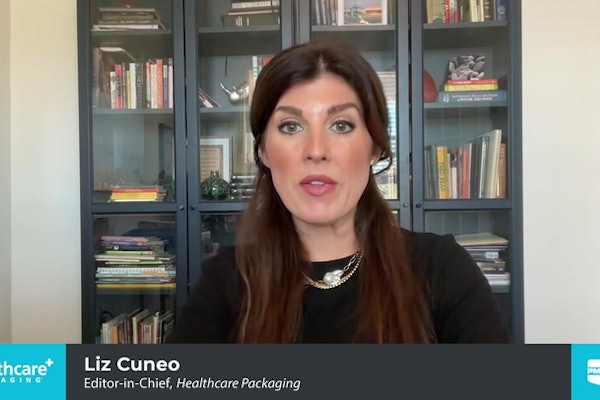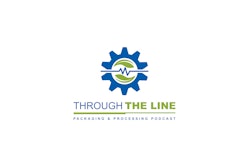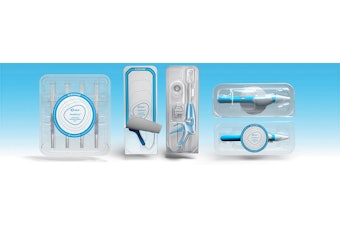Healthcare Packaging: You’ve worked on the design and validation of sterile barrier packaging systems for medical devices for Medtronic, Smith and Nephew, and Oliver-Tolas, and on commercial strategies for flexible food packaging with LMI Packaging before recently returning to the medical device supplier side with Printpack Medical. What are the primary differences you see in terms of packaging needs for end-user firms in both food and medical devices and how can each industry learn from the other?
Randall Troutman, Printpack: In a lot of cases, packaging material producers are making similar flexible materials for different end-use markets. However, a lot of the knowledge, experience, and technology is transferrable between them. At the end of the day, the products being packaged can have a positive impact on consumer health and safety, or a negative one, if the value chain is not executed correctly.
The biggest contrast I see is that food packaging over the past 10 years has primarily focused on cost maximization, while medical device packaging has focused on safety and quality control. The next 10 years, I believe, will bring these two segments more into balance as medical device manufacturers (MDMs) push for improved costs and more economical materials while food producers require increased quality standards and manufacturing control.
At HealthPack 2014, an MDM professional said that packaging provides an area to help manage costs for an MDM, yet she voiced concerns about meeting multiple standards that were causing her company to have to spend more money. Can you comment on this matter and offer your insights?
It seems in food packaging that the cost-to-performance balance has been heavily strained over the past 10 years. Food packaging typically includes high-volume, lower price-point materials compared to medical device packaging. As requirements increase for food packagers and material producers, the increased costs for validations, cleanliness standards, traceability, etc., have to be absorbed by material producers with an already lower price-point product. As price pressures mount, the cost and effort to transition a food packaging material to a newer technology is much less expensive and involved than what is required for medical packaging transitions. This affords material producers and food packagers more options in developing lower-cost, equivalent (or higher) performing materials at a faster pace to stay in line with market pressures.
As it relates to medical device packaging, these standards have been in place and the price point of typical medical packaging materials has stayed higher than that of comparable food packaging materials. With the focus on cost more prevalent in medical packaging than it has ever been before, a material producer will be further challenged to maintain the strictest levels of control and quality. As newer, potentially more cost-effective materials are introduced, the cost to develop, qualify, validate, and implement is very high for medical device applications. It is a challenge to manage cost while maintaining the highest standards to introduce new technologies that offer a more competitive price-to-performance ratio.
I believe the key to addressing these challenges independent of the end-use market is to have a solid and transparent working relationship between the partners. Projects require a lot of time and investment and you need to work together to address future needs today. If pressure is mounting, work together to develop plans to address those challenges so that it can be a win/win situation. There are always factors in the marketplace beyond the control of either the producer or packaging supplier. Identify those areas, but don’t waste too much time on them. Find the opportunities to address cost-competitiveness together through product development, quality improvements, and supply chain inefficiencies.
What are the key issues your company's customers have or are expressing related to packaging materials, regulatory, sustainability, etc?
Food packaging is about an increased focus on packaging and food safety right now. Companies are moving toward standards to comply with the GFSI (Global Food Safety Initiative), namely Safe Quality Food certification. Some companies have gone as far as to achieve Level 3, which also incorporates the overall quality system. In doing so, you may be able to drop your ISO certifications, if they’re not absolutely required by a customer. The major tenets are Good Manufacturing Practices, cleanliness (of facility, production equipment, employees, and finished goods), and traceability. We have a vast food supply network in the U.S., and being able to track materials from the material producer to the food packager through the distribution chain to the end user is paramount. Consider the potential affect of unacceptable materials entering the food packaging value chain and how many people it could adversely affect.
In regards to sustainability, you hear so much about it, and everyone defines it differently. At the end of the day, I always question the format and end-use design in conjunction with the materials used. As consumers, we want environmentally friendly materials, and we also want single-serve, on-the-go convenience, which does not lend itself to a theoretical sustainable practice.
For medical devices, I think MDM packaging professionals are more advanced in their thinking than ever before. The standards are becoming clearer, the test methods are established (and being challenged as needed), and the understanding that medical packaging requires a more detailed development cycle has improved greatly over the past 10 years.
One thing I have seen for some time is that people are often looking externally for answers to the hard medical device packaging questions when the answer is within their own organization. I believe that medical packaging is about knowing what to do, knowing how to do it, and most importantly, knowing why you did it. Your company knows your products, standards, and test plans as well as the distribution environment better than anyone else. You are the experts, but you need to know why you are doing what you are doing. Don’t be afraid to challenge the processes. Always remember that the objective of a sterile barrier packaging system is to maintain sterility above all else.
What issues do you see regarding workforce development and equipping young packaging professionals to be better prepared to benefit a company?
As an employee you need to know your strengths and weaknesses. Know what environment, leader, and type of work excites you to do your very best every day. As leaders, there are factors of Intelligence Quotient (IQ) and Emotional Quotient (EQ) that you must understand and identify. When hiring an employee, we always specify the education level and specific degree or experience required to perform the job function. But we always need to know how an employee is going to act—that is the EQ. How did they get to where they are? How will they fit into the team and its culture? How will they react in the face of adversity?
Once you have well-rounded people, you have to be training tomorrow’s employees today in order to ensure that you have stewards of your culture, processes, and overall vision. Today’s employees—regardless of their generation—want to be more empowered and allowed to learn as they go. As you develop teams, no matter what the discipline, first set the standards for performance and then communicate those expectations. Help your employees and those around them to see the requirements and then spend your time together in the gray space using everyone’s individual creativity and experiences to achieve your organization’s big goals.—Jim Butschli
Randall Troutman, Account Manager, Printpack Medical
can be reached at [email protected]





















